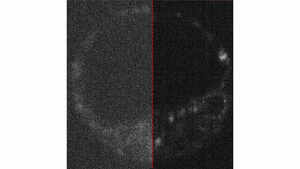~cosmos-magazine | Bookmarks (522)
-
Spark of life in an embryo seen for the first time using a quantum camera counting individual photons
Images of an embryo have for the first time been taken using cameras designed for making...
-
Fossil feathers in volcanic rock reveal a new mode of soft tissue preservation
Palaeontologists have discovered that volcanic deposits can turn the microscopic details of animal tissues into minerals...
-
Fearless North American desert iguanas colonised Fiji
Iguanas are scattered across the Caribbean and Galápagos islands and throughout the tropical, subtropical and desert...
-
Modern humans may have descended from at least two ancestral populations
Modern humans may have descended from at least two ancestral populations, which diverged 1.5 million years...
-
Public health, trust and preparing for the next pandemic
It seems inevitable there will be another pandemic so the real challenge is to back public...
-
US science cuts already affecting Australian meteorological capabilities
Decisions of the US government to reduce science capacity are already disrupting Australia’s meteorological capabilities, according...
-
SKA-Low telescope’s first image just the tip of the iceberg
More than 2 years into its construction, SKA-Low, the international SKA Observatory’s telescope in remote Australia,...
-
Another new method to convert carbon dioxide into useful products
Chemists have developed a new catalytic method to transform carbon dioxide into formate, a chemical compound...
-
Saturn now has 274 moons – but what makes a moon is unclear
Earlier this week, Saturn gained a whopping 128 new official moons, as the International Astronomical Union...
-
Extreme heat killing people with heart disease
Extreme heat is behind 7.3% of the heart disease burden in Australia, according to new research....
-
Michelle is monitoring an unfolding avian catastrophe
Trailblazers: Dr Michelle Wille is a world expert on avian influenza. She is a Senior Scientist...
-
Why can’t we hear the sound of one hand clapping?
How does the way we clap our hands effect the sounds we produce? A new study...
-
Does exercise really help you live longer?
Plenty of studies have found that being physically active is associated with lower risk of cardiovascular...
-
New clue towards prevention and detection of ovarian cancer
In vital progress in the fight against high-grade serious carcinoma, one of the most aggressive and...
-
Fluoride study results "ludicrous" says expert
A small but decade-long study on the effects of fluoride in drinking water in Bangladesh, suggesting...
-
Dozens of dinosaur footprints found on boulder displayed at Queensland school
Dozens of 3-toed dinosaur footprints from nearly 200 million years ago could illuminate a mysterious period...
-
Rising CO2 threatens crop nutrition and global food security
Climate change caused by greenhouse gas emissions is directly affecting the world’s food crops through changes...
-
Seabirds suffer hidden damage from ingesting plastic
Seabird chicks that ingest even small amounts of plastic are suffering from hidden but severe health...
-
What’s a blazar? This type of galaxy is more diverse than we thought
A galaxy sitting in the background of the Lizard constellation is emitting a narrow jet of...
-
Mammal ancestors that lived with dinosaurs all had dark brown or grey fur
A new study looking at fossilised structures inside cells hints at our mammal ancestors’ nocturnal past...
-
Crocodile smorgasbord now includes more pork and beef
Northern Territory crocodile populations have grown from 1000 to 100,000 in the fifty-four years since commercial...
-
‘Life-changing’ finding for young-onset Parkinson’s
In an important win for people living with Parkinson’s, a new study has finally determined the...
-
3D-printed micro-lens can see inside blood vessels
Adelaide-based researchers have created a tiny, 3D-printed micro-lens that can peer inside blood vessels and therefore...
-
Oldest human face found in Europe adds complexity to question of path out of Africa
A fossil found in Spain and dating to 1.4 to 1.1 million years ago is the...



























